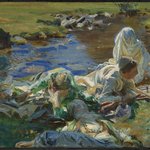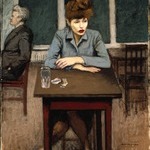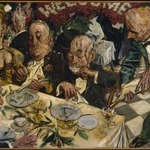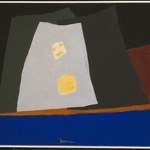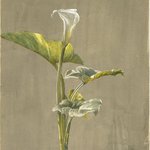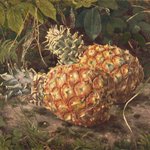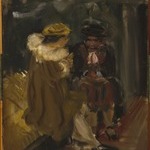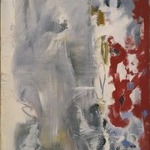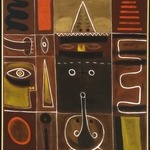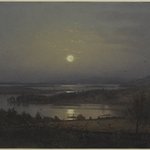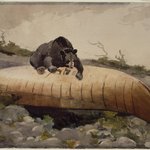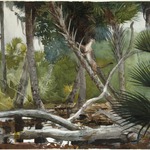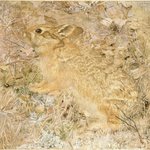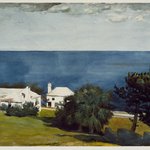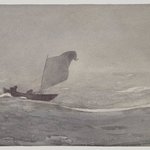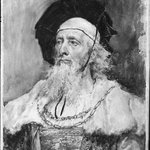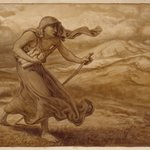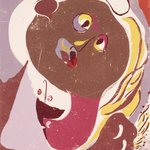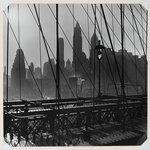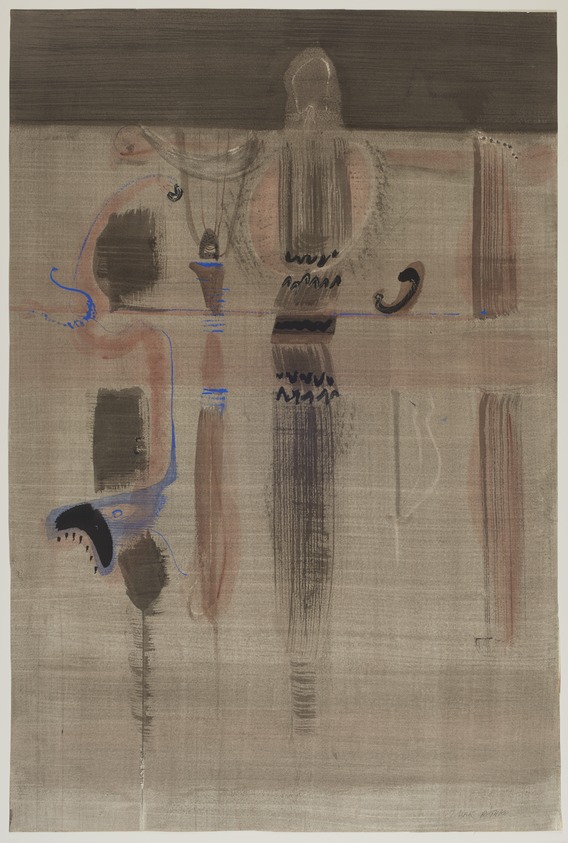
This image is presented as a "thumbnail" because it is protected by copyright. The Brooklyn Museum respects the rights of artists who retain the copyright to their work.

Mark Rothko (American, born Russia, 1903–1970). Vessels of Magic, 1946. Watercolor on paper, 38 3/4 x 25 3/4 in. (98.42 x 65.4 cm). Brooklyn Museum, Museum Collection Fund, 47.106. © artist or artist's estate (Photo: Brooklyn Museum, 47.106_recto_PS11.jpg)
Vessels of Magic
Mark Rothko
Contemporary Art
By 1940, Mark Rothko—deeply impressed by the European Surrealists, some of whom came to this country during World War II—integrated their technique of automatic drawing and their interest in myth into his own work and moved away from the direct representation seen in his earlier art. Reflecting on this time, Rothko later said: "It was with utmost reluctance that I found that the figure could not serve my purposes … but a time came when none of us could use the figure without mutilating it." Rothko's work of the mid-1940s is an amalgam of Surrealism and abstraction. Vessels of Magic anticipates these works with horizontal registers on the paper's surface broken only by passages of imagery and gesture. The vessel forms may suggest the artist's interest in classical mythology, while the image's watery quality has a primordial, mythic nature that suggests something of humankind's origins as well as the power of magic.
MEDIUM
Watercolor on paper
DATES
1946
DIMENSIONS
38 3/4 x 25 3/4 in. (98.42 x 65.4 cm) (show scale)



SIGNATURE
Signed lower right: "Mark Rothko"
COLLECTIONS
Contemporary Art
ACCESSION NUMBER
47.106
CREDIT LINE
Museum Collection Fund
MUSEUM LOCATION
This item is not on view
CAPTION
Mark Rothko (American, born Russia, 1903–1970). Vessels of Magic, 1946. Watercolor on paper, 38 3/4 x 25 3/4 in. (98.42 x 65.4 cm). Brooklyn Museum, Museum Collection Fund, 47.106. © artist or artist's estate (Photo: Brooklyn Museum, 47.106_recto_PS11.jpg)
IMAGE
recto, 47.106_recto_PS11.jpg. Brooklyn Museum photograph, 2022
"CUR" at the beginning of an image file name means that the image was created by a curatorial staff member. These study images may be digital point-and-shoot photographs, when we don\'t yet have high-quality studio photography, or they may be scans of older negatives, slides, or photographic prints, providing historical documentation of the object.
RIGHTS STATEMENT
© artist or artist's estate
Copyright for this work may be controlled by the artist, the artist's estate, or other rights holders. A more detailed analysis of its rights history may, however, place it in the public domain.
The Museum does not warrant that the use of this work will not infringe on the rights of third parties. It is your responsibility to determine and satisfy copyright or other use restrictions before copying, transmitting, or making other use of protected items beyond that allowed by "fair use," as such term is understood under the United States Copyright Act.
For further information about copyright, we recommend resources at the United States Library of Congress, Cornell University, Copyright and Cultural Institutions: Guidelines for U.S. Libraries, Archives, and Museums, and Copyright Watch.
For more information about the Museum's rights project, including how rights types are assigned, please see our blog posts on copyright.
If you have any information regarding this work and rights to it, please contact copyright@brooklynmuseum.org.
RECORD COMPLETENESS
Not every record you will find here is complete. More information is available for some works than for others, and some entries have been updated more recently. Records are frequently reviewed and revised, and we welcome any additional information you might have.


